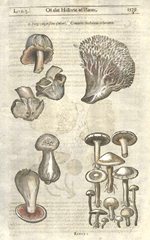 The Herball, or general historie of plantes by John Gerarde (1545-1612) was one of the most important herbals in the 16th century when there was great interest in practical uses of botany. Centuries ago, paper was an expensive commodity and the heavily inked carved woodblocks of both illustrations and descriptive historic text distinctively identify the period of the prints by showing through to the reverse side of the thin hand-made paper - as in this illustration of "Common Mushrums - to be Eaten".
The Herball, or general historie of plantes by John Gerarde (1545-1612) was one of the most important herbals in the 16th century when there was great interest in practical uses of botany. Centuries ago, paper was an expensive commodity and the heavily inked carved woodblocks of both illustrations and descriptive historic text distinctively identify the period of the prints by showing through to the reverse side of the thin hand-made paper - as in this illustration of "Common Mushrums - to be Eaten".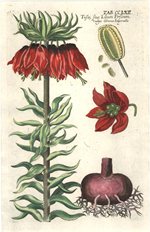
Over the centuries printing methods were refined to enable finer detail and larger circulation. In the early 17th century copperplates were engraved to produce illustrated catalogues for horticultural establishments in Europe. Author, artist, engraver and printer, Johann Theodor de Bry (1561-1623) first published his Florilegium Novem (literally, New Gathered Flowers) in 1612. De Bry copied many earlier engraved plates by botanical artist, engraver and embroidery designer Pierre Vallet (c1575-1657), the apothecary and botanist Basilius Besler (1561-1613), and the Dutch Van de Passe family of engravers. De Bry's Florilegium was so popular that he reprinted and expanded it several times.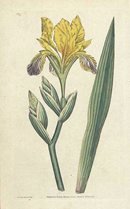
In 1787 Praefectus Hortis (Horticultural Director) of Chelsea Physic Garden in London, William Curtis (1746-1799), commenced publication of a series of illustrations of flowers “in response.. to solicitations for a work... (combining) Botany and Gardening”. Some of the earliest antique illustrations of Australian flowers and plants were from specimens sent to Kew Gardens at the end of the 18th century - many of which were cultivated in England. "Curtis's Botanical Magazine" is still published today - now as "Kew Magazine".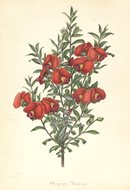
The progression of printing technology and paper manufacture over the years for this important series of antique botanical illustrations provides an interesting comparison of antique printing styles. The earliest of these antique prints were engraved on copper plates (in reverse from a mirror image), printed on hand-made paper, and then each individual print was carefully coloured with pigments produced from nature. From the beginning of the 19th century, paper was made by machine, and soon after, printing plates were made of more durable steel to enable larger print runs without losing the definition of the engraving.
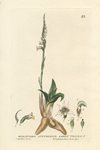
Introduced into Britain around twenty years later, lithography gave the artist complete facility, drawing with a zinc crayon on a smooth limestone plate for printing. Each lithograph was initially hand-coloured but when this became too slow and expensive, colour-printing of the printing plates was introduced. Today's technology of cameras and computers produces an exact replication of the specimens, but does not have the human element - either of artistic display or representation.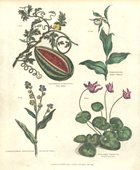
The different antique print styles over the centuries - whether antique herb prints, antique fruit prints, antique prints of flowers with their dissection details, or groups of flowers and leaves of the countryside - all provide a limitless selection of beautiful botanical antique prints. The fascinating variety of artistic botanical representation brings nature indoors all year round - whether from the glamour of a grand orchid in full bloom from a watercolour by Henry Moon for Sanders' "Reichenbachia" - or from the simple elegance of an individual frond of a fern or individual leaf - that particularly suit modern decors.




